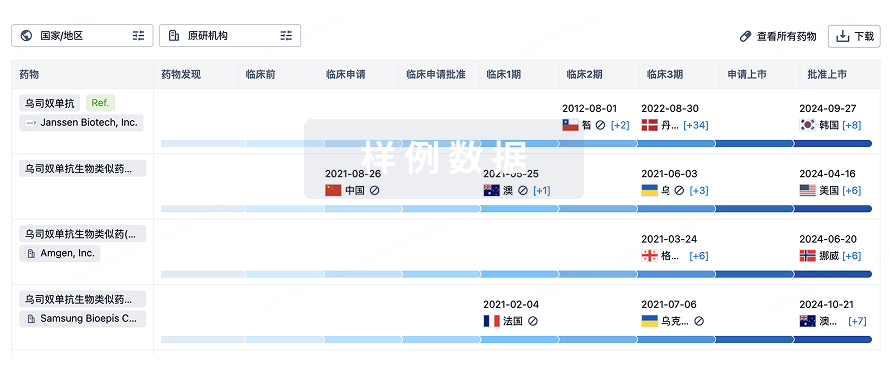预约演示
更新于:2025-12-20
PM-10 (MedImmune)
更新于:2025-12-20
概要
基本信息
原研机构 |
在研机构 |
非在研机构- |
权益机构- |
最高研发阶段临床前 |
首次获批日期- |
最高研发阶段(中国)- |
特殊审评- |
关联
100 项与 PM-10 (MedImmune) 相关的临床结果
登录后查看更多信息
100 项与 PM-10 (MedImmune) 相关的转化医学
登录后查看更多信息
100 项与 PM-10 (MedImmune) 相关的专利(医药)
登录后查看更多信息
24
项与 PM-10 (MedImmune) 相关的文献(医药)2025-03-01·REPRODUCTIVE TOXICOLOGY
Association between maternal exposure to air pollution and intrapartum fetal distress: A retrospective cohort study
Article
作者: Najafi, Laily ; Zayeri, Farid ; Khamseh, Mohammad E ; Khajavi, Alireza ; Zahmatkesh, Ehsan ; Shafaghat, Ali ; Raznahan, Maedeh ; Noohi, Amir Hussein
This study aimed to investigate the association between maternal exposure to ambient air pollution and intrapartum fetal distress. The retrospective data were obtained for 150 parturients, ages 19-45, referred to Kamali Teaching Hospital, Karaj, Iran, in 2016. To assess the impact of the 2, 4, and 8 weeks exposure windows before the delivery of particulate matter ≤ 10 micrometers (PM10) and sulfur dioxide (SO2) on fetal distress incidence, logistic regression models were fitted, crudely and adjusted for maternal covariates. The parturients' ages owned a mean (standard deviation) of 30.4 (5.4). Moreover, 17 fetal distress cases were detected (11.3 %), demonstrating higher proportions of cousin marriage and family history of diabetes than the non-fetal distress group. Adjusted for body mass index, cousin marriage, abortion, and family history of diabetes, and over the eight weeks exposure window, a five µg/m3 increase of SO2 and PM10 provided odds ratios of 2.12 (95 % CI: 1.04-4.30) and 1.61 (95 % CI: 1.08-2.40), respectively, for fetal distress incidence. To conclude, we found the long-term impacts of SO2 and PM10 on the incidence of fetal distress based on the exposure level during the last eight weeks of pregnancy.
2024-05-01·Ecotoxicology and environmental safety
Particulate matter (PM10) exacerbates on MK-801-induced schizophrenia-like behaviors through the inhibition of ERK-CREB-BDNF signaling pathway
Article
作者: An, Ju-Yeon ; Cho, Ye Eun ; Cho, So-Young ; Bae, Ho Jung ; Park, Se Jin ; Choi, Yu-Yeong ; Choi, Seung-Hyuk ; Kim, So-Yeon ; Mony, Tamanna Jahan ; Kim, Dong Hyun ; Kim, Hyun-Jeong
Particulate matter (PM), released into the air by a variety of natural and human activities, is a key indicator of air pollution. Although PM is known as the extensive health hazard to affect a variety of illness, few studies have specifically investigated the effects of PM10 exposure on schizophrenic development. In the present study, we aimed to investigate the impact of PM10 on MK-801, N-methyl-D-aspartate (NMDA) receptor antagonist, induced schizophrenia-like behaviors in C57BL/6 mouse. Preadolescent mice were exposed PM10 to 3.2 mg/m3 concentration for 4 h/day for 2 weeks through a compartmentalized whole-body inhalation chamber. After PM10 exposure, we conducted behavioral tests during adolescence and adulthood to investigate longitudinal development of schizophrenia. We found that PM10 exacerbated schizophrenia-like behavior, such as psychomotor agitation, social interaction deficits and cognitive deficits at adulthood in MK-801-induced schizophrenia animal model. Furthermore, the reduced expression levels of brain-derived neurotrophic factor (BDNF) and the phosphorylation of BDNF related signaling molecules, extracellular signal-regulated kinase (ERK) and cAMP response element-binding protein (CREB), were exacerbated by PM10 exposure in the adult hippocampus of MK-801-treated mice. Thus, our present study demonstrates that exposure to PM10 in preadolescence exacerbates the cognitive impairment in animal model of schizophrenia, which are considered to be facilitated by the decreased level of BDNF through reduced ERK-CREB expression.
2024-03-01·Skin research and technology : official journal of International Society for Bioengineering and the Skin (ISBS) [and] International Society for Digital Imaging of Skin (ISDIS) [and] International Society for Skin Imaging (ISSI)
Effects of Siegesbeckia herba extract against particulate matter 10 (PM
10
) in skin barrier‐disrupted mouse models
Article
作者: Lee, Weon Ju ; Kwack, Mi Hee ; Yoon, Hyo Jin ; Park, Kyung Duck
Abstract:
Objectives:
Skin barrier disruption is a significant problem of the older population in an aging society. It is characterized by increased transepidermal water loss and decreased skin water content, and particulate matter (PM) is a social issue that can contribute to the exacerbation of skin inflammation. Thus, addressing this problem is urgent.
Methods:
Skin barrier‐disrupted mouse models were induced by two methods using acetone application or tape‐stripping. This study investigated the antioxidative and anti‐inflammatory properties of the Siegesbeckia herba extract (SHE) on PM‐induced changes in skin barrier‐disrupted mouse models. To examine changes in skin water content, inflammatory cytokines, and keratinocyte differentiation markers, mouse models were treated with vehicle 100 μL, PM
10
100 μL (100 μg/mL), SHE 100 μL, or PM
10
100 μL (100 μg/mL) plus SHE 100 μL.
Results:
SHE preserved skin hydration in the skin barrier‐disrupted mouse models regardless of the presence of PM
10
. SHE also inhibited the upregulation of inflammatory cytokines such as interleukin (IL)‐1β, IL‐4, IL‐6, IL‐8, and tumor necrosis factor‐α and normalized the downregulation of keratinocyte differentiation markers against PM
10
in skin barrier‐disrupted mouse models.
Conclusions:
This study elucidated the therapeutic effects of SHE against PM
10
in skin barrier‐disrupted mouse models.
100 项与 PM-10 (MedImmune) 相关的药物交易
登录后查看更多信息
研发状态
10 条进展最快的记录, 后查看更多信息
登录
| 适应症 | 最高研发状态 | 国家/地区 | 公司 | 日期 |
|---|---|---|---|---|
| 假单胞菌感染 | 临床前 | 美国 | - |
登录后查看更多信息
临床结果
临床结果
适应症
分期
评价
查看全部结果
| 研究 | 分期 | 人群特征 | 评价人数 | 分组 | 结果 | 评价 | 发布日期 |
|---|
No Data | |||||||
登录后查看更多信息
转化医学
使用我们的转化医学数据加速您的研究。
登录
或

药物交易
使用我们的药物交易数据加速您的研究。
登录
或

核心专利
使用我们的核心专利数据促进您的研究。
登录
或

临床分析
紧跟全球注册中心的最新临床试验。
登录
或

批准
利用最新的监管批准信息加速您的研究。
登录
或

生物类似药
生物类似药在不同国家/地区的竞争态势。请注意临床1/2期并入临床2期,临床2/3期并入临床3期
登录
或

特殊审评
只需点击几下即可了解关键药物信息。
登录
或

生物医药百科问答
全新生物医药AI Agent 覆盖科研全链路,让突破性发现快人一步
立即开始免费试用!
智慧芽新药情报库是智慧芽专为生命科学人士构建的基于AI的创新药情报平台,助您全方位提升您的研发与决策效率。
立即开始数据试用!
智慧芽新药库数据也通过智慧芽数据服务平台,以API或者数据包形式对外开放,助您更加充分利用智慧芽新药情报信息。
生物序列数据库
生物药研发创新
免费使用
化学结构数据库
小分子化药研发创新
免费使用
